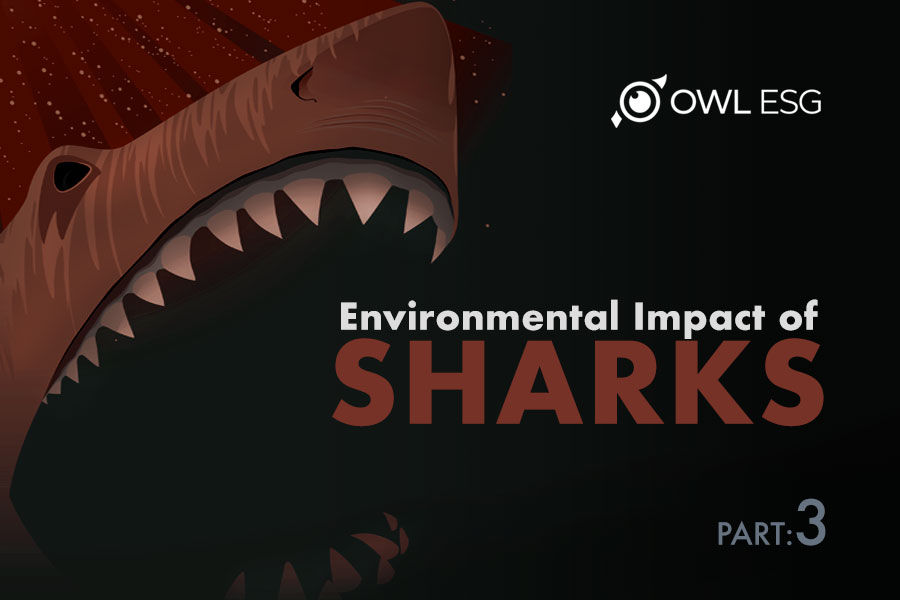Habitat Destruction
Shark and ray populations are dwindling due to both direct threats, such as fishing, and indirect factors like habitat loss. Additionally, the expansion of coastal development has accelerated alongside the increasing human population and migration to coastal regions, leading to significant degradation in marine environments. Mining and aquaculture activities further contribute to this environmental decline.
Accessible areas are also the most degraded—terrestrial zones, freshwater habitats, estuaries, coastal areas, the inshore region, and the open ocean. Consequently, shark species residing in freshwater or brackish waters are particularly vulnerable to habitat degradation. For instance, the Ganges shark (Glyphis gangeticus) has nearly vanished from its limited range in the lower Ganges-Hooghly river system in India.
Coastal and estuarine regions serve as fundamental refuges for many shark species, providing shelter from predators and facilitating essential activities like feeding, mating, and reproduction. Species inhabiting coastal areas face greater risks from habitat loss compared to those dwelling in the open ocean. For instance, scouring activities for coastal development in The Bahamas have negatively impacted the survival of juvenile lemon sharks. The decline in coral reefs and mangroves, which are essential habitats for numerous shark and ray species, exacerbates their vulnerability.
What is habitat loss?
Habitat loss occurs when ocean areas or coastlines are altered or degraded to the extent that they can no longer support the species residing there, potentially leading to their extinction. There are three main types:
- Habitat destruction: When habitat damage reaches a point where it can no longer sustain its native species, it is considered destroyed, often leading to extinction, either locally or for entire species. According to UNESCO, approximately 30–35 percent of vital marine habitats like coral reefs and mangroves have been lost.
- Habitat degradation: Degraded habitats, while still existing, lack quality and integrity, making it challenging for species to thrive. As a result, they may either relocate or face extinction. Nearly 60 percent of the world’s primary marine ecosystems are believed to be degraded.
- Habitat fragmentation: Habitats are split into smaller areas, increasing the risk of extinction for species. This leads to resource competition among populations, limiting their range and movement, delaying their ability to locate food and mates.
Causes of habitat loss in oceans
While human activities are predominantly responsible for the current marine habitat loss, natural events like storms and tsunamis can also cause damage, though they occur less frequently. Let’s take a closer look at top contributors to habitat destruction, degradation, and fragmentation.
Climate Change
Climate change is rapidly transforming marine ecosystems, largely due to human activity. But rising ocean temperatures are leaving once-vibrant habitats uninhabitable for many species. For instance, coral bleaching occurs when corals eject algae due to stress from temperature changes, leaving them vulnerable to disease and starvation, ultimately affecting the entire reef ecosystem. Additionally, more frequent extreme climate events (i.e., marine heatwaves and ocean acidity) are devastating coastal marine communities.
Run-off
Pollution from several sources, including industry, urbanization, and agriculture, enters marine ecosystems through run-off, posing significant threats to coastal habitats such as coral reefs. Eutrophication, a consequence of excessive nutrient input from run-off, leads to overgrowth of marine plants and algae, depleting oxygen levels in the water and disrupting the balance of marine ecosystems.
Deoxygenation (low levels of oxygen)
Ocean deoxygenation, a topic not usually talked about, is a consequence of human-induced climate change. It occurs when oxygen levels in the water are reduced, creating hypoxic conditions unsuitable for marine life. This phenomenon can result from eutrophication, ocean warming, and increased stratification, where separate layers of water form due to temperature and salinity differences.
With surface waters warming and becoming less saline due to factors like ice melting, mixing between layers decreases, leading to reduced oxygen distribution. These low-oxygen areas, often referred to as “dead zones,” now number 415 worldwide, severely limiting marine biodiversity.
Destructive fishing and industrial activities
Some intensive fishing practices pose significant environmental threats. For instance, bottom trawling and explosive-based techniques cause instant and extensive damage to marine habitats. Similarly, activities like dredging resemble seabed plowing, leading to irreversible harm to seafloor ecosystems and dependent communities.
While marine tourism boosts coastal economies, it also causes risks to habitats. Activities such as snorkeling, boating, and diving can inadvertently harm fragile marine ecosystems like coral reefs. Even common items like sunscreen, containing harmful chemicals (oxybenzone and octinoxate), contribute to the deterioration of coral health.
Habitat destruction in terrestrial environments like the Amazon Rainforest is evident, but the extensive loss beneath the ocean’s surface remains largely hidden, with unknown consequences. Recognizing this, international organizations are intensifying efforts to expand ocean science for sustainable development.
The United Nations has designated the next decade (2021-2030) as the Ocean Science for Sustainable Development Decade to address the severe decline in ocean health. Projects funded by organizations like the Save Our Seas Foundation shed light on the impacts of habitat loss on marine species, supporting policymakers in implementing necessary protections. Without global action to mitigate climate change, reduce marine pollution, and curb destructive activities like fishing and dredging, the adverse effects of habitat loss on marine life and productivity will persist.
Conservation Status
Sharks are highly misunderstood animals, notably perpetuated by media portrayals like the iconic movie ‘Jaws,’ depicting them as relentless predators. However, many species face the threat of extinction, emphasizing the urgency of protecting them. Below are just a few sharks that are on the cusp of extinction.
Conservation Efforts
As the ocean’s top predators, sharks are vital for ecosystem balance. Dedicated conservation groups and charities work tirelessly to protect these creatures and preserve ocean health. Through advocacy, research, and policy initiatives, these organizations lead the charge in safeguarding sharks from various threats.
Groups you can support
Formed in 1997 by concerned divers and marine biologists, Shark Trust has evolved into one of Europe’s leading shark conservation groups. Advocating for policies like marine protected areas and sustainable fishing practices, they also conduct research and educational programs to raise awareness about sharks’ vital role in marine ecosystems. With a track record of successful lobbying efforts, Shark Trust continues to champion shark conservation globally.
Saving the Blue is devoted to preserving endangered marine species and fostering a connection between people and ocean life through education and outreach, both on and offline. Their advocacy focuses on promoting green living, waste reduction, resource management, and healthy lifestyles. The organization also supports the local community by engaging in activities like beach clean-ups, school visits, and eco-friendly initiatives, aiming to inspire and educate others about marine conservation. They offer different ways to support their cause, including financial donations, shark adoptions, equipment contributions, and purchasing shark-themed merchandise, all while providing opportunities for hands-on involvement in their conservation projects through science-based expeditions.
The Shark Conservation Fund (SCF) is an initiative led by philanthropists aiming to address the global crisis faced by sharks and rays. SCF invests in projects at local, national, and international levels to stop overexploitation, prevent extinctions, reverse population declines, and restore endangered species through targeted grant-making. Notable achievements include supporting projects aligned with three core objectives: regulating global trade, preventing extinction, and combating unsustainable fishing practices. Supporting SCF enables individuals to contribute to complete shark and ray conservation efforts, including promoting sustainable practices and serving critically endangered species.
The Shark Research Institute (SRI), founded in 1991 in Princeton, New Jersey, is a pioneering nonprofit organization dedicated to shark conservation. With field offices across the U.S. and internationally, including Australia, Canada, and South Africa, SRI leads the way in using rigorous scientific research to advocate for shark protection. Through visual tracking, DNA studies, and environmental advocacy, SRI works to shape conservation policies at international forums like CITES.
The Shark Research Unit, based in South Africa, focuses on shark and marine research, primarily in Aliwal Shoal and Mossel Bay. Collaborating with marine scientists, ecotourism businesses, and academic institutions, they conduct innovative research and conservation activities. Beyond this, they foster the next generation of shark scientists through edu-tours, student outreach, and internships. Their work, particularly in Mossel Bay, has provided valuable perceptions into great white shark behavior and ecology, contributing to conservation efforts in South Africa and raising awareness globally.
Shark Allies, a nonprofit established in Hawaii in 2007 and later incorporated in California in 2014, is dedicated to global shark and ray conservation. Through research, film production, and diving experiences, they’ve grown over the years. Notably, they played a key role in the development of the world’s first shark fin trade ban legislation in 2010, paving the way for similar bans on other wildlife products. Today, they continue their efforts to reduce shark product consumption, protect habitats, and raise awareness. Supporting Shark Allies means contributing to their advocacy work and joining the shark protection movement through education, events, and media outreach.
ROB STEWART SHARKWATER FOUNDATION
The Rob Stewart Sharkwater Foundation was named in honor of the acclaimed filmmaker and conservationist, Rob Stewart, and is dedicated to safeguarding sharks and marine ecosystems. Through campaigns like Fin-Free and Shark Free, they raise awareness and inspire action. The foundation educates communities globally about shark conservation, emphasizing individual contributions. Notable achievements include producing influential documentaries like “Sharkwater” and “Sharkwater Extinction,” highlighting critical issues. Supporting the foundation means contributing to shark, ecosystem, and ocean preservation, promoting awareness, education, and action for sustainable conservation.
FIN-ishing Thoughts
- Shark populations are dwindling due to both direct and indirect factors.
- There are three types of habitat loss: destruction, degradation, and fragmentation.
- Climate change, run-off, deoxygenation, and destructive fishing/industrial activities are top causes of habitat loss in oceans.
- Sneak peek into which sharks are at risk for extinction.
- Groups you can support to help conserve the oceanic ecosystem and sharks.
Sharks stand as vital guardians of the sea, playing indispensable roles as regulators, contributors to carbon sequestration, and preservers of biodiversity. Their survival is threatened by human activities, underscoring the importance of conservation efforts to protect them and the ecosystems they inhabit. By recognizing and appreciating the environmental impact of these beautiful creatures, we can work towards ensuring their continued presence and prosperity in our oceans.




